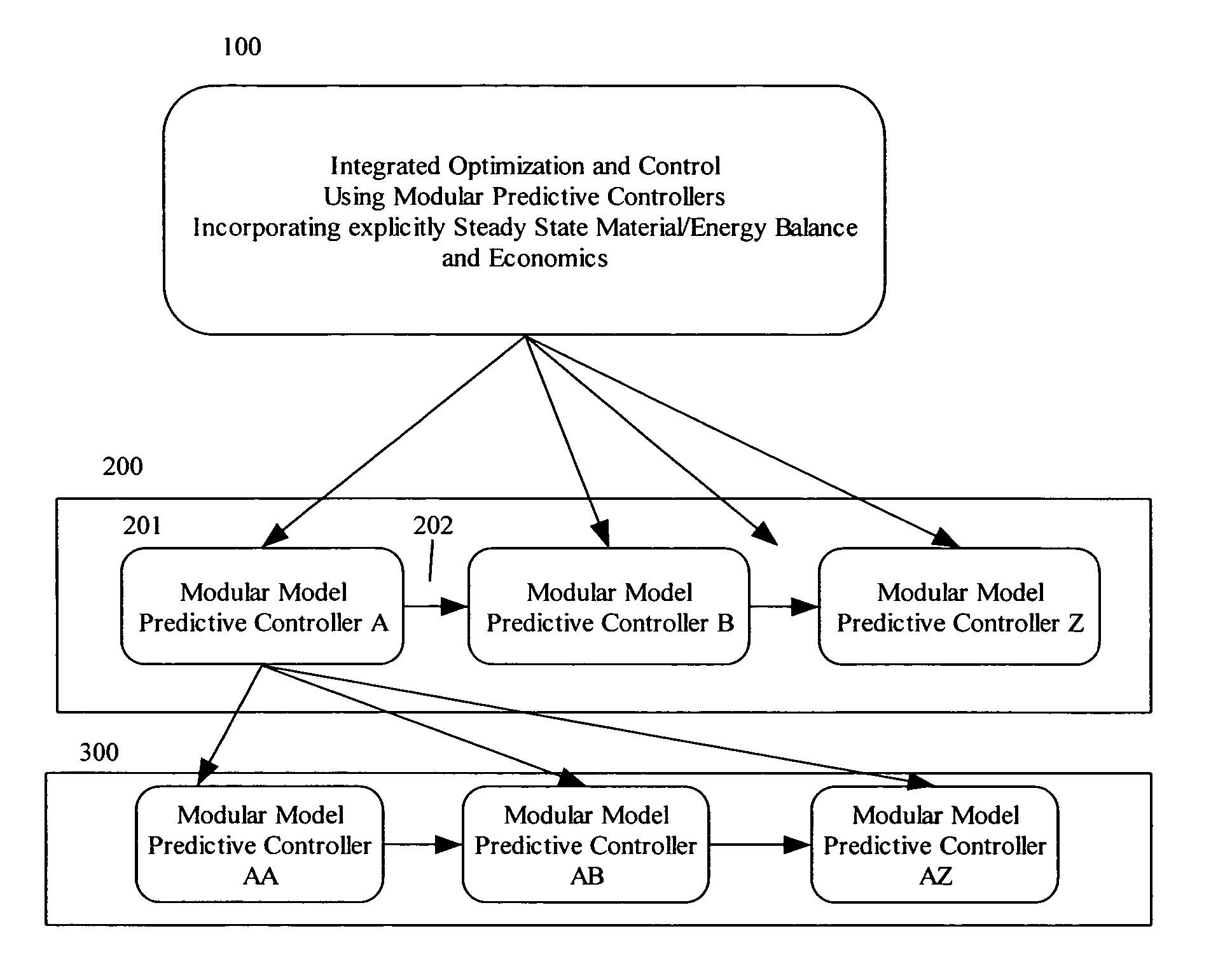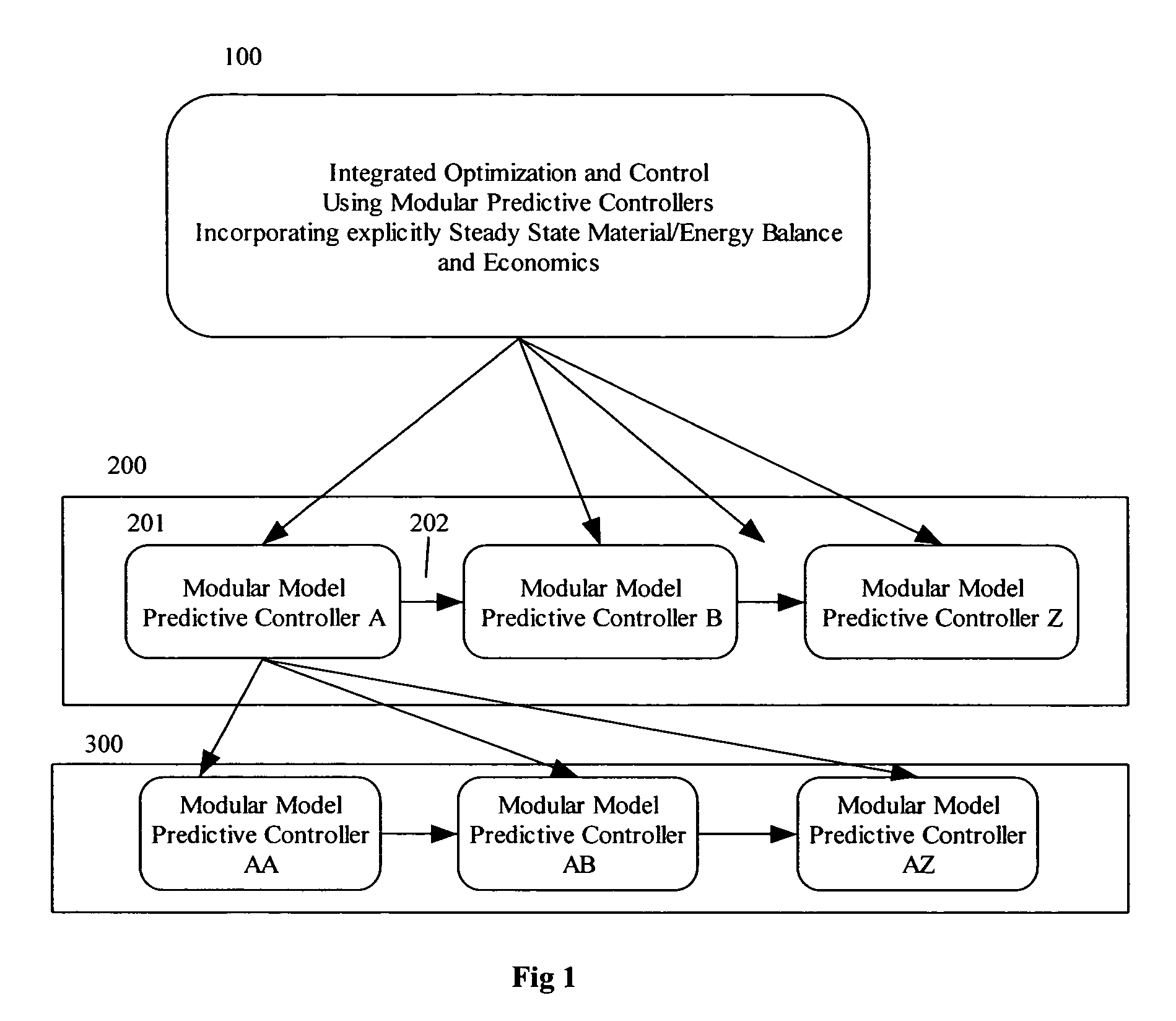Integrated optimization and control using modular model predictive controller
a model predictive controller and integrated technology, applied in the direction of electrical programme control, program control, instruments, etc., can solve the problems of exacerbated problems, lack of robustness of mpc for sustained improvement of process operation profitability under changing conditions, and difficulty in adjusting the parameters of the process, so as to achieve the optimization of overall profitability of operation, facilitate integration, and maintain the effect of overall stability of the process
- Summary
- Abstract
- Description
- Claims
- Application Information
AI Technical Summary
Benefits of technology
Problems solved by technology
Method used
Image
Examples
case study 1
[0254] No Model Mismatch, No Feed Forward Variation Change of Constraints: This case study demonstrates the basic performance difference between MPC and MX-MPC in that the latter achieves the same overall steady state with minimal violation of the controlled variable constraints. Notice the response of the profit value in both the cases. In case of MX-MPC, the response is well behaved with little overshoot while keeping all of the controlled variables within their respective limits.
[0255]The first response shown in the results is from MX-MPC. The remaining results are from MPC runs in which the tuning was varied to match the results from MX-MPC run. As shown, after five changes to the tuning, MPC does not match as well with the results of MPC. In conclusion, performance of MPC cannot be matched to performance of MX-MPC by simply changing its tuning.
case study 2
[0256] No Model Mismatch, With Feed Forward Variation No Change of Constraints: This case study demonstrates the improved performance of MX-MPC to feed forward variable variation as compared to MPC. The underlying tuning is same in both the cases except for the additional constraints and controlled variable for MX-MPC. Performance of MPC is shown first, followed by performance of MX-MPC in the results are presented in FIG. 10–12.
case study 3
[0257] Same as Case study 2 with lower frequency of feed forward variable Variation: This case study demonstrates that while MPC's performance degrades considerably requiring retuning whereas MX-MPC's performance practically remains unchanged. This proves that MX-MPC posses more robust towards feed forward variable variation than MPC.
PUM
 Login to View More
Login to View More Abstract
Description
Claims
Application Information
 Login to View More
Login to View More - R&D
- Intellectual Property
- Life Sciences
- Materials
- Tech Scout
- Unparalleled Data Quality
- Higher Quality Content
- 60% Fewer Hallucinations
Browse by: Latest US Patents, China's latest patents, Technical Efficacy Thesaurus, Application Domain, Technology Topic, Popular Technical Reports.
© 2025 PatSnap. All rights reserved.Legal|Privacy policy|Modern Slavery Act Transparency Statement|Sitemap|About US| Contact US: help@patsnap.com



